Furniture Stripping: How to do it and what to use
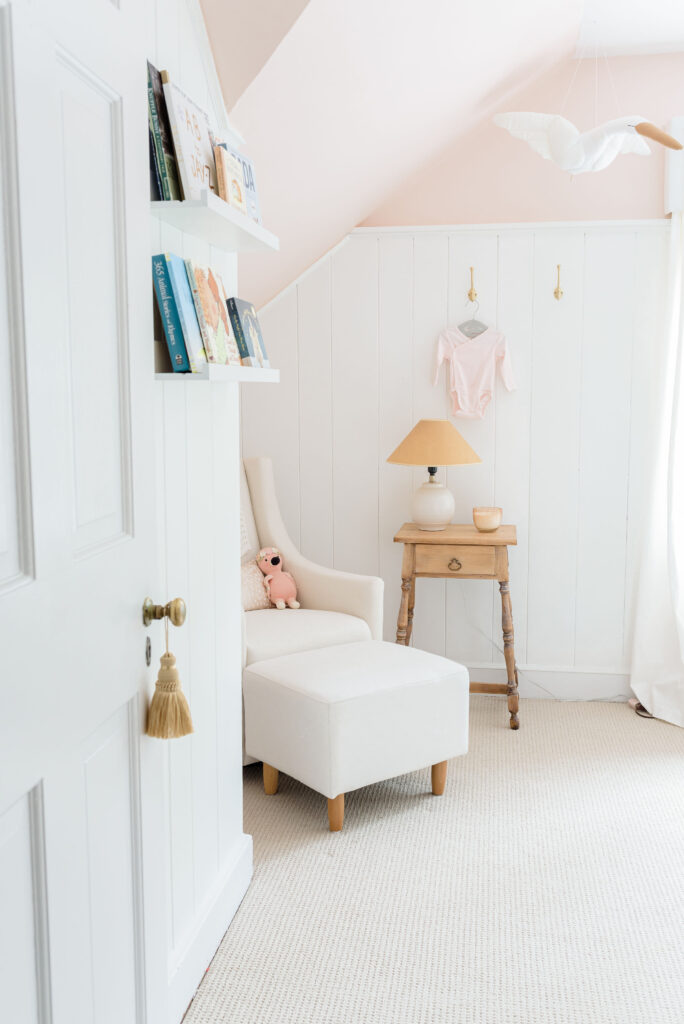
If you’re thinking about taking on your first furniture stripping project but aren’t sure where to start, you’re in the right place. I’m a huge fan of restoring old furniture, and stripping furniture with a chemical stripper is often step one of a furniture makeover.
Stripping furniture can sound intimidating if you’ve never done it, but I promise that it’s not all that hard. And once you get the hang of it, it’s an awesome skill to have in your DIY arsenal. You’ll be able to transform flea market finds and side-of-the-road scores at a whole new level.
How to determine whether to sand or strip furniture
There are two major methods for getting old paint and stain off of furniture. First, you can sand off old stain and paint or spray paint. And second, you can use a chemical furniture stripper, like Citristrip or Painter’s Solvent, to do the job for you.
The furniture stripping method you choose will depend on your project.
For surfaces that are large and flat, or have straight edges (i.e. a parsons table or the top of a desk), I usually prefer just to sand off the old finish. For me, sanding big, flat surfaces is just faster. I always use an orbital sander to strip furniture, and I do the project outside. I bought this set of sanding sheets in various grits on Amazon, which works perfectly for stripping projects.
However, there are certain times when chemical stripper also works best, including:
For a piece with lots of curves or detail work. This is because it’s really hard to sand curves and woodwork details well and I find that, with more intricate furniture, results are better with chemical stripper anyway.
For painted furniture pieces. Furniture stripper is just easier and less messy for pre-painted projects.
I’ve covered both methods, below, so you can choose which one you think is right for your prpject!
Stripping furniture with a sander
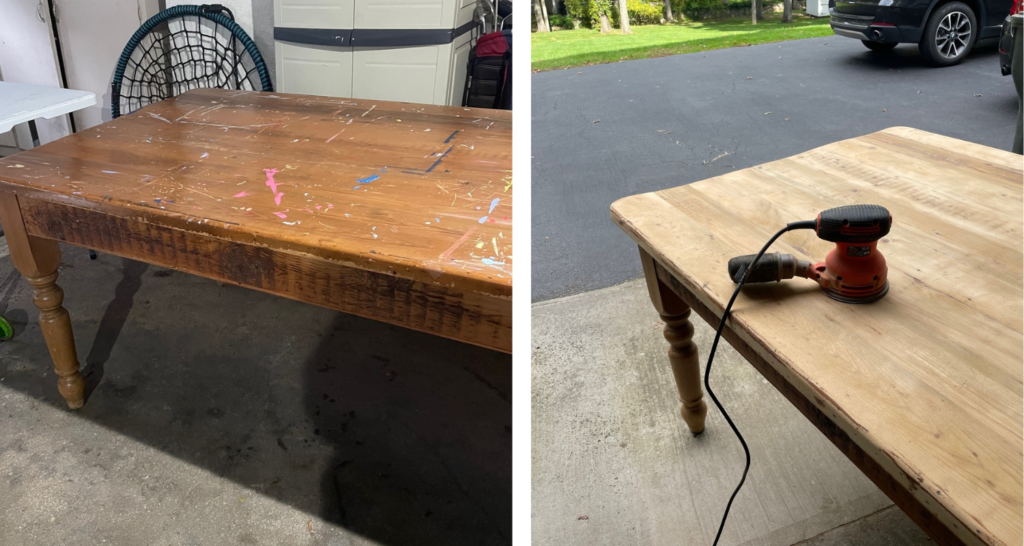
Stripping furniture with a sander is *almost* as simple as plugging in your orbital sander and running it over the surface of your piece.
I say almost because there are a few nuances that’ll help you do it successfully.
The first: move your sander slowly (But keep it moving). If you move the sander too fast, the old finish won’t come off of your furniture completely and you’ll end up passing over the same spot over and over again and wondering why your sander isn’t working.
At the same time, you’ve also gotta keep it moving. If you leave the sander in one spot for too long, you’ll start to take a gauge out of the furniture (this is especially important if you’re sanding a veneered piece). I like to think about the second hand on a clock when I sand – that’s about how fast I move.
Another important tip is to use different sandpaper grits. Start with a coarse grit, and work your way to a finer grit. Make sure you follow ‘the golden rule of sanding’ which is to never skip more than one grit between sandings. I.e., you can go from 100 grit sandpaper, to 150, to 220, but not from 100 to 180 or 100 to 220.)
Finally, don’t us an orbital sander on rounded or curved edges. They don’t work well for this purpose, and you’ll end up with flat spots along the edges. Ask me how I know. Instead, you can use a disc sander or detail sander if you have one, or you can hand-sand these areas with a sanding block.
Think stripping is the right method for you? Great. Here’s how to do it.
Stripping furniture: what you’ll need
Citristrip, Painter’s Solvent or other chemical stripper
Chip brush
Plastic wrap or plastic bags
Putty knife or scraper
Bucket
Stripping pads
Stripping furniture: how to do it
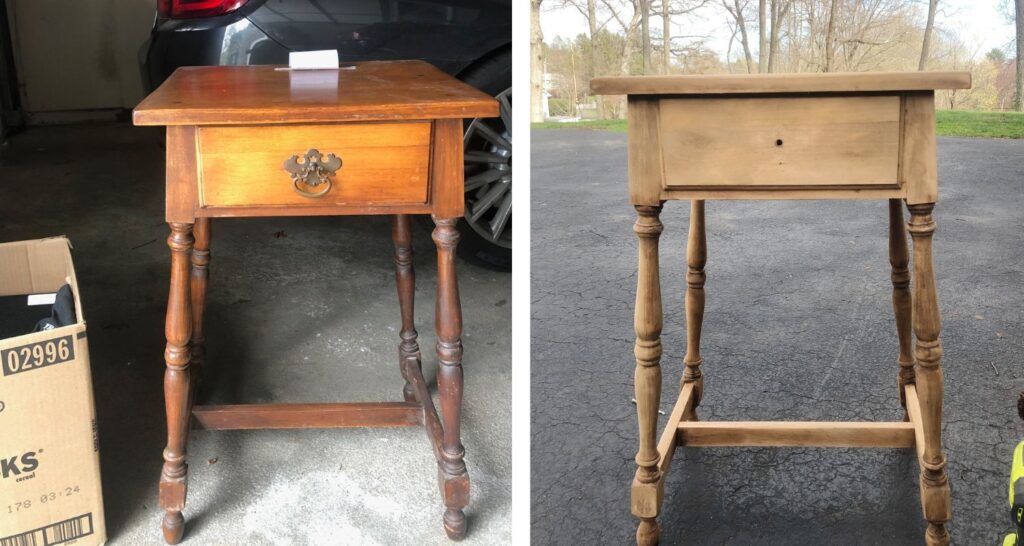
When I strip furniture, I usually use Citristrip. It’s not the most powerful stripper on the market, but it’s less toxic than the heavy-duty ones, so I think it’s worth the trade off. I’ve also heard good things about Painter’s Solvent and Minwax Furniture Refinisher if you want something stronger.
One thing to note: Citristrio doesn’t work on Epoxy, and works kind of on pieces with a polyurethane coat, so if you’re project falls into one of those categories, you’ll need something more powerful. In the side table example I show here, the piece had some polyurethane on it, but the table was so old and the finish was wearing off in a lot of spots, so I went ahead with Citristrip anyway. It worked OK, but required some more elbow grease when it came to scraping the finish off.
The first step is to coat the piece in the chemical stripper. I do this with a chip brush. If you use Citristrip, it’s important to coat it liberally. Like if you were a kid pouring syrup on your pancakes.
Once that’s done, you’ll wrap the entire piece in either a plastic bag, or plastic wrap (or both), and wait. The plastic covering helps the product to soak in without drying out.
I usually wait at least 12 hours or overnight to give the product time to work. (Just don’t wait too long, because then the Citristrip will start to dry. Again, ask me how I know).
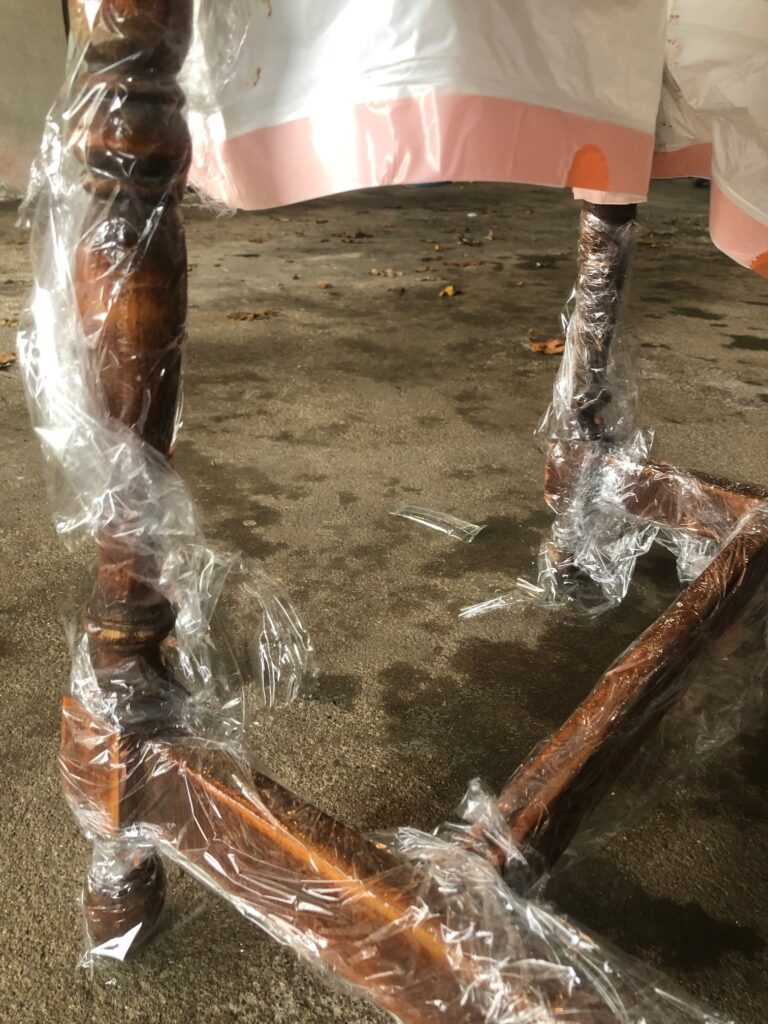
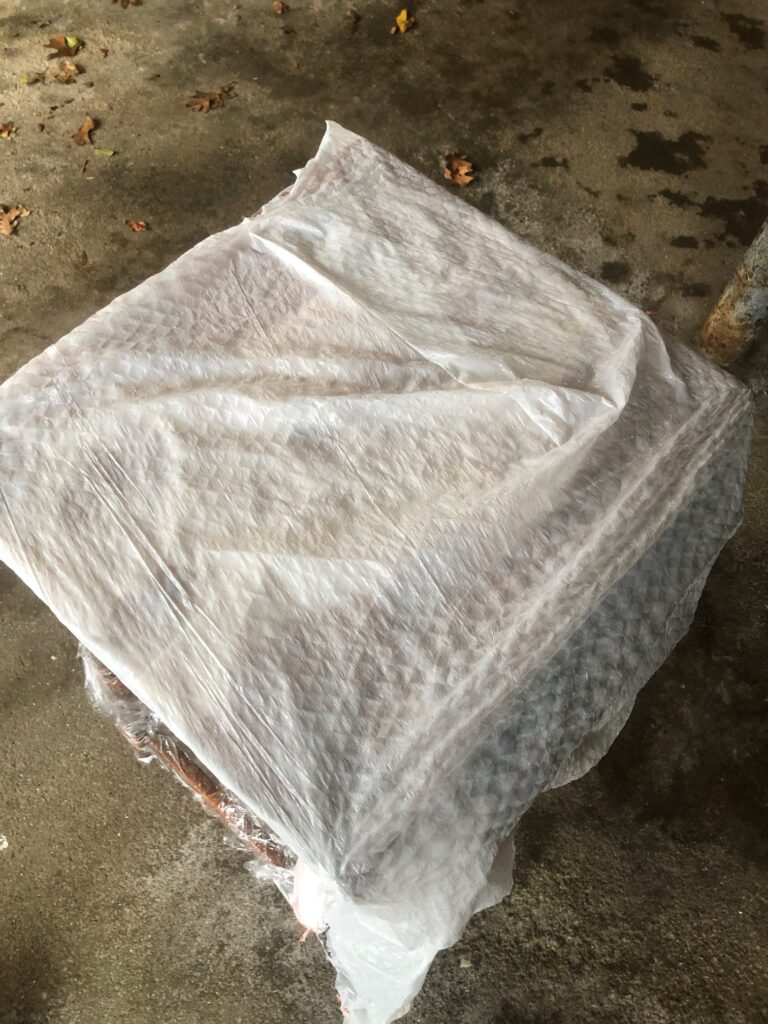
When you’re ready, remove the plastic wrap, and use a putty knife to start scraping the old finish off the piece. The finish will have turned into a sticky, gel-like substance, so I also like to have a bucket of water and a rag to rinse and wipe my knife with. This process is messy, so I suggest doing it outside on a tarp or drop cloth.
The scraping won’t remove all of the finish, and you’ll have some left over. I scrub any areas that are still tacky with damp stripping pads.
Once the piece is dry, I’ll then usually go over any stubborn areas with an orbital sander or detail sander, which tends to take care of any remaining finish pretty quickly.
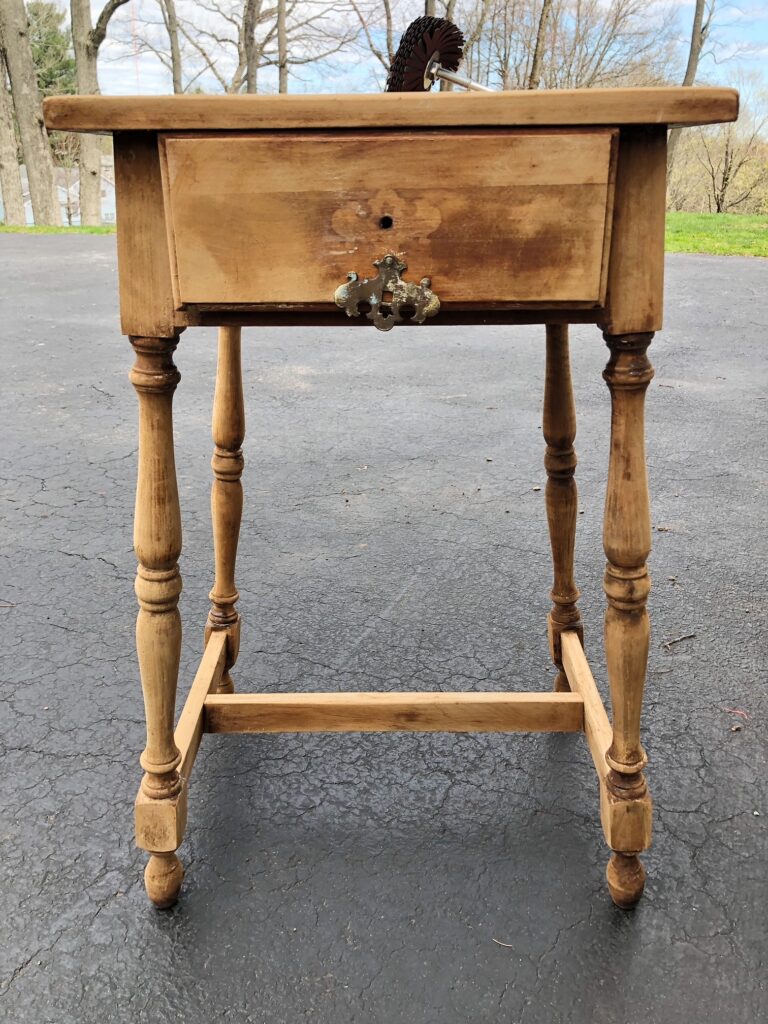
For this particular piece, I wanted an antiqued, bleached-oak look. I added a white-tinted wax to the table, and that’s it. So, I took a little more time making sure that most of the old finish color was gone. If you’ll be re-painting your furniture, or staining it a darker color, you don’t have to spend *quite* as much time making sure every bit of old color is off. You just want to make sure you see smooth, bare wood.

And that’s it! Now your furniture is ready for its new life.
What is the easiest way to strip furniture?
The easiest way to strip furniture really depends on the item you’re working on. If it has large, flat areas, I find sanding is generally easier than using a chemical stripper. But, for more detailed pieces or furniture with lots of round edges, chemical strippers work best.
If you choose a chemical stripper, the type you choose will also impact how labor-intensive the job is. Klean Strip Painter’s Solvent, for example, is potent and works quickly, but it also contains VOCs and toxic chemicals. Natural strippers like Citristrip aren’t as powerful, don’t contain the same toxic ingredients as solvents.

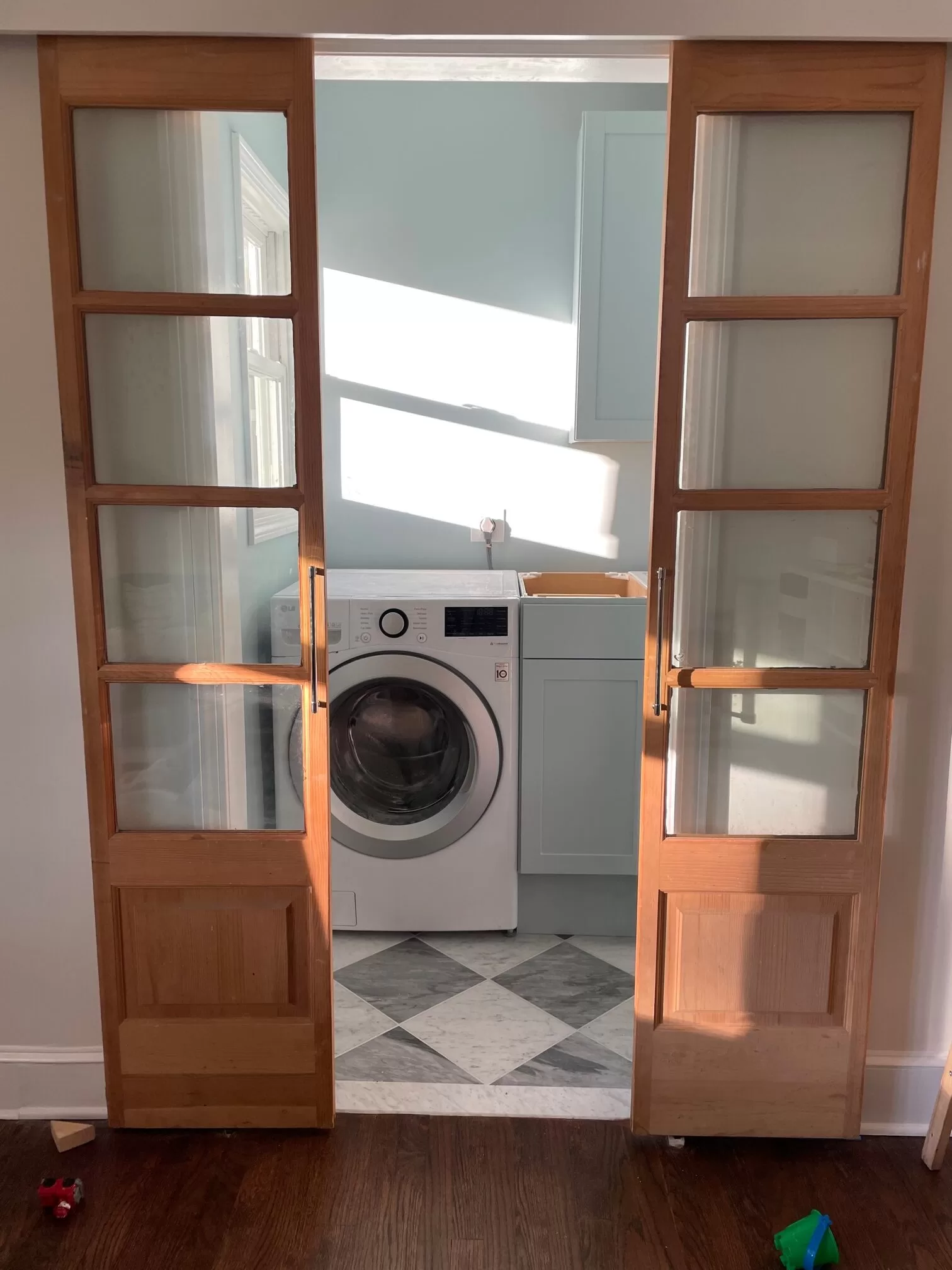

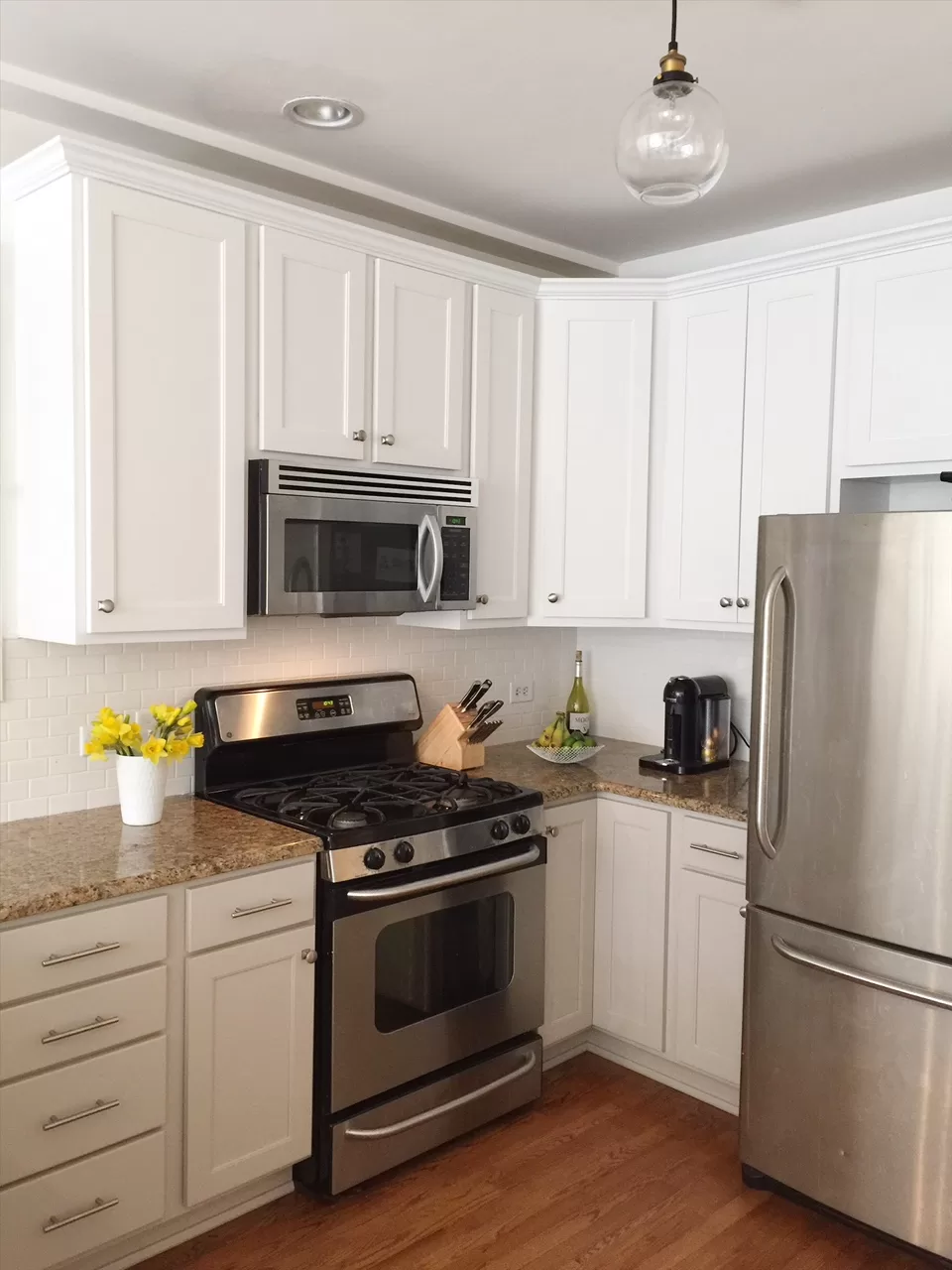
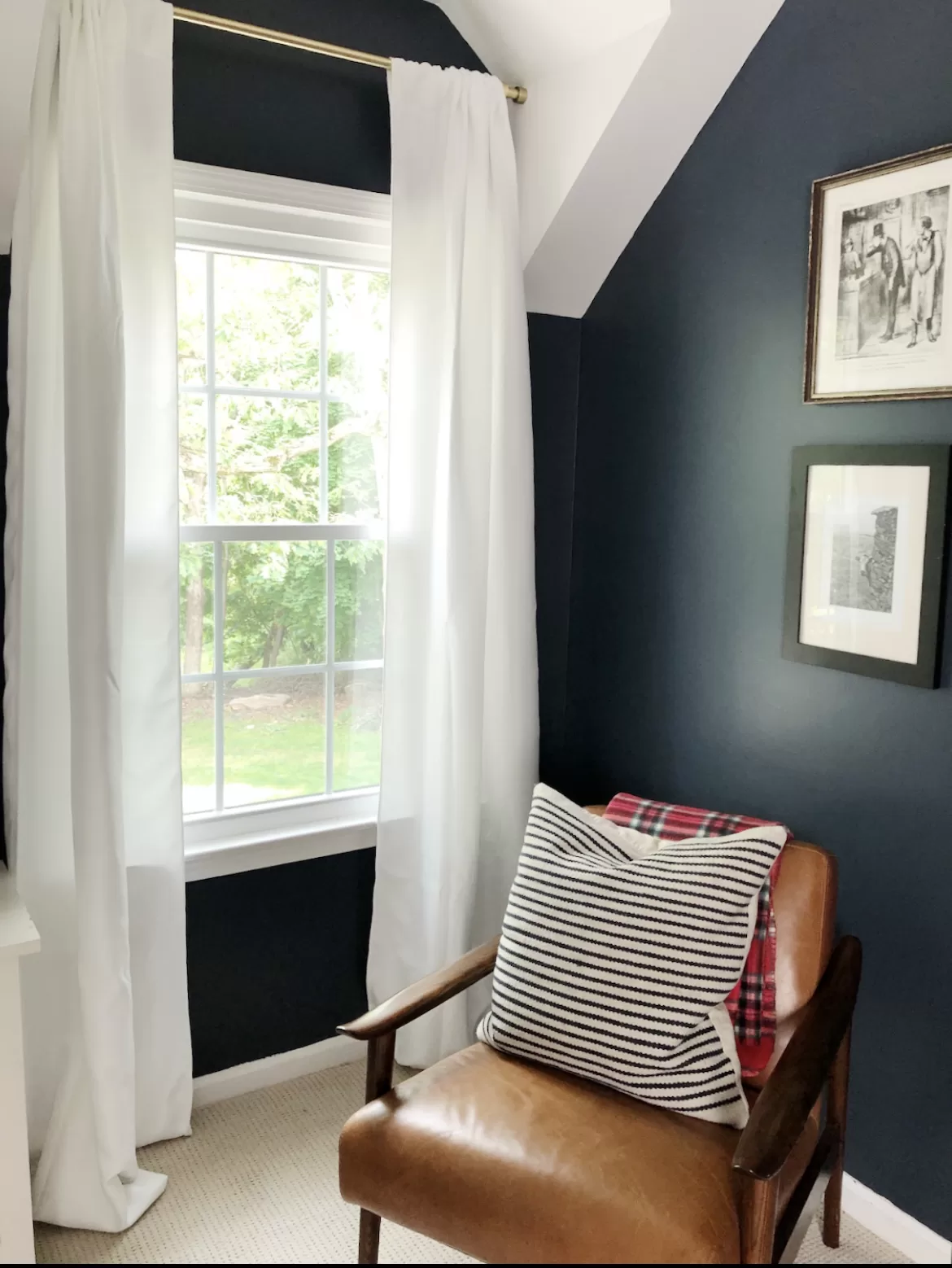

One Comment